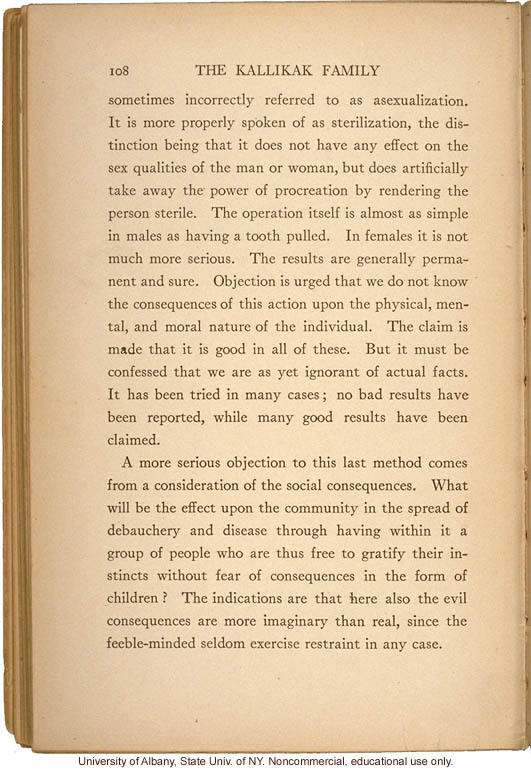108 The Kallikak Family
sometimes incorrectly referred to as asexualization. It is more properly spoken of as sterilization, the distinction being that it does not have any effect on the sex qualities of the man or woman, but does artificially take away the power of procreation by rendering the person sterile. The operation itself is almost as simple in males as having a tooth pulled. In females it is not much more serious. The results are generally permanent and sure. Objection is urged that we do not know the consequences of this action upon the physical, mental, and moral nature of the individual. The claim is made that it is good in all of these. But is must be confessed that we are as yet ignorant of actual facts. It has been tried in many cases; no bad results have been reported, while many good results have been claimed.
A more serious objection to this last method comes from a consideration of the social consequences. What will be the effect upon the community in the spread of debauchery and disease through having within it a group of people who are thus free to gratify their instincts without fear of consequences in the form of children? The indications are that here also the evil consequences are more imaginary than real, since the feeble-minded seldom exercise any restraint in any case.
[end]


